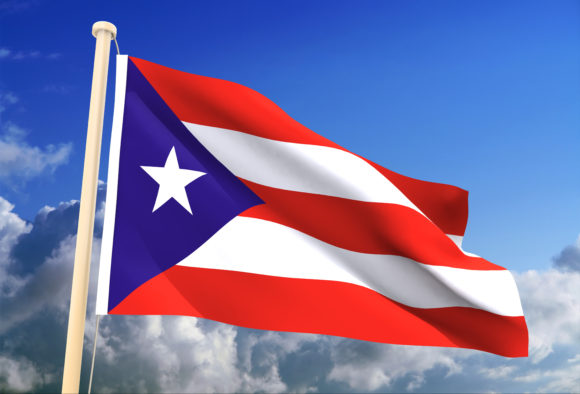SAN JUAN, Puerto Rico – The Center for Biological Diversity filed a lawsuit Tuesday against the U.S government, accusing it of endangering wildlife and humans as it prepares to dredge and expand Puerto Rico’s biggest bay to accommodate massive tankers that will serve a new liquid natural gas terminal.
The Arizona-based nonprofit said the U.S. Army Corps of Engineers’ $60 million project would remove 2.2 million cubic yards of seafloor sediment to deepen and widen San Juan Bay’s shipping channels.
Dredging would last more than a year, and some of the material could be transported to the nearby Condado Lagoon Estuarine Reserve, which is popular with locals and tourists who swim, snorkel and paddleboard its waters, where manatees and starfish are a common sight.
The lawsuit also states that several “overburdened environmental justice communities” near and around the U.S. territory’s north coast could be at risk from pollution, explosions and oil spills if the dredging is completed and the terminal starts operating. It noted that the Corps did not consult with communities that could be affected.
“This project will destroy corals and threaten communities and deepen the island’s dangerous dependence on fossil fuels,” Catherine Kilduff, an attorney for the center, told The Associated Press.
The center and two environmental groups – CORALations and El Puente de Williamsburg Inc. – filed the lawsuit against the U.S. Army Corps of Engineers, U.S. Fish and Wildlife Service and others. They have 60 days to respond, and then both sides would make arguments before a judge issues a decision that can be appealed.
Spokespeople for the two government agencies did not immediately return a message for comment. The Corps previously stated that dredged materials in the Condado Lagoon would fill depressions and create seagrass habitat.
The lawsuit states that the Corps submitted an environmental assessment instead of a more rigorous environmental impact statement and accused it of reaching an erroneous determination in August 2018 that dredging would have no environmental impact.
The lawsuit noted that more than 1.5 million people live in eight cities and towns that surround the San Juan Bay: “The coastal economy is connected to the bay and its health.”
If the dredging project is completed, tankers transporting petroleum and liquefied natural gas would carry about six times the capacity of vessels that currently use Puerto Rico’s busiest harbor.
It’s located in a bay that is part of a larger ecosystem made up of rivers, lagoons and a smaller bay that cover 3,400 acres and are home to threatened and endangered animals including four types of sea turtles, manatees and the yellow-shouldered blackbird.
Kilduff said the nonprofits are demanding an environmental impact statement in part because of new information on how dredging smothers corals.
“So much of Puerto Rico’s economy depends on coastal resources like tourism and fishing,” she said.
The lawsuit also warned that the dredging project would “hasten damage, weathering and erosion of the coast and structures” including two massive historic forts that guarded San Juan Bay during colonial times.
The nonprofits said a smaller project with more robust mitigation such as the use of sediment curtains and requiring new seals on barges could reduce environmental damage.
“The agency failed to take a ‘hard look’ at the direct, indirect and cumulative environmental impacts of its decision before acting,” the lawsuit stated.
The complaint is the latest hit on plans to build a liquefied natural gas import terminal in San Juan that has come under intense scrutiny. In June, a federal appeals court ruled that New York-based New Fortress Energy Inc. did not obtain the necessary permits before starting construction of the terminal and must face a review by the Federal Energy Regulatory Commission.
Environmental groups have long rejected construction of the terminal as they demand that Puerto Rico lessen its dependence on fossil fuels, which generate about 97% of the island’s electricity. Natural gas represents roughly 44% and petroleum another 37%. Renewables account for only 3%.
Was this article valuable?
Here are more articles you may enjoy.


 How Three New CMS Policies Impact Workers’ Comp Claims
How Three New CMS Policies Impact Workers’ Comp Claims  OpenAI And Microsoft Sued Over Murder-Suicide Blamed on ChatGPT
OpenAI And Microsoft Sued Over Murder-Suicide Blamed on ChatGPT  Atmospheric River to Flood Pacific Northwest Through Week
Atmospheric River to Flood Pacific Northwest Through Week  Florida And East Coast Will See Big Losses From More Cat 5 Storms, Researchers Say
Florida And East Coast Will See Big Losses From More Cat 5 Storms, Researchers Say 